Contents
Well, what a holiday without champagne! And if the winemaker celebrates the holiday, then the champagne must be made by hand – how could it be otherwise? The Rum Diary finally got to the secrets of making sparkling wines and is ready to share them with readers. Today we will talk about how to make champagne from homemade or purchased wine, using simple and French technology with disgorging, and also learn how to make simple “children’s” champagne from grape leaves or blackcurrant leaves.
Of course, making champagne at home is always a risk. Wine may not be carbonated, it may turn out to be cloudy, too sweet, or vice versa dry, bottles with a sparkling drink sometimes explode during aging, and the most annoying thing is that not only beginners, but also experienced winemakers are not immune from all this. But will such trifles stop real alcoholic experimenters? Of course not! After all, who does not take risks … well, you understand.
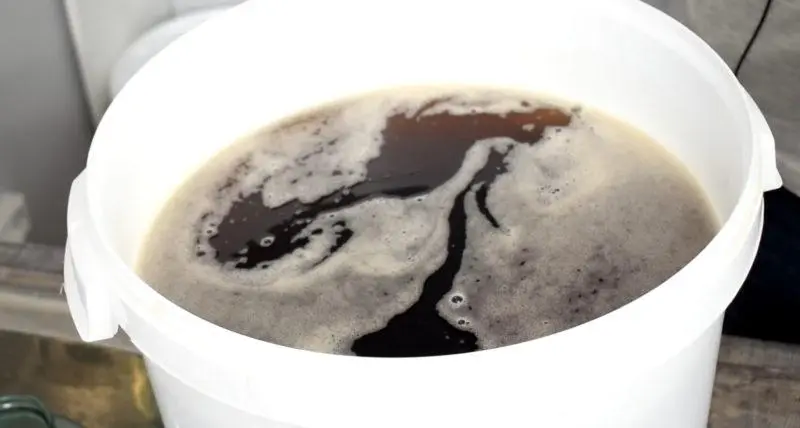
Champagne at home using simplified technology
It is clear that we will not get “champagne” in the full sense of the word at home. But making sparkling wine is quite possible, and it is not as difficult as it might seem. The only thing you will need without fail is a cool cellar and, of course, wine – either homemade, just finished the stage of rapid fermentation, or purchased (in this case, good wine yeast is also needed). In general, let’s get started.
House wine champagne
In fact, you can make champagne from almost any type of wine. Of course, the ideal is white from grapes like Chardonnay. But not necessarily – excellent sparkling wine is obtained from both rosé and red wines (especially those made using the “white” technology), and from berry wines – for example, gooseberry, currant, raspberry. A special topic is cider, but we have a separate article about it.

How to make homemade champagne from homemade wine? And easier than ever! To begin with, we are preparing ordinary light wine (there are recipes for grape wine here, raspberry recipe here, and the rest see the corresponding section on the site). The wine should almost finish violent fermentation – roughly speaking, it must be taken when the water seal is almost no longer gurgling, in which case we will not need anything but a cellar to make sparkling wine.
- We take still slightly playing wine and bottle it – always thick, champagne.
- We cork the bottles as tightly as possible, best of all – with a new steamed champagne cork with a muzzle and leave them in a cool cellar for 2-3 months. Bottles must be kept in an inclined or semi-inclined position – so that the wine is in contact with the bottom surface of the cork – then it will not dry out.
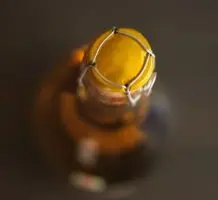 For corking bottles, it is best to use new long champagne corks. If this is not possible, you can take second-hand corks, but in this case they will have to be filed from the bottom, in the thickest part – otherwise they will not fit into the neck. This, of course, is not so reliable. Musle is also better to use those that have not yet been in use – otherwise they break easily when twisted, checked. And the most reliable way is to buy a special device for twisting the muzzle, they are on sale.
For corking bottles, it is best to use new long champagne corks. If this is not possible, you can take second-hand corks, but in this case they will have to be filed from the bottom, in the thickest part – otherwise they will not fit into the neck. This, of course, is not so reliable. Musle is also better to use those that have not yet been in use – otherwise they break easily when twisted, checked. And the most reliable way is to buy a special device for twisting the muzzle, they are on sale.
- A month before drinking, the bottle must be placed in a vertical position – so that the sediment from the walls moves to the bottom. To speed up the process, you can lightly shake each bottle daily or lightly tap it with a rubber mallet.
- Before use – cool to 8-15 degrees and everything is ready! Pour into glasses carefully so as not to disturb the sediment.
Of course, this method has many disadvantages. Firstly, the wine almost always turns out to be cloudy, as it simply does not have time to lighten up. Secondly, due to aging on the lees, it can acquire an unpleasant bitterness. Thirdly, due to insufficient aeration, the wine can turn out to be unstable, prone to spoilage and disease. Fourthly, it comes out only dry. And fifthly, with this technique, we cannot regulate the pressure inside the bottle, which is why champagne often explodes (therefore, bottles are recommended to be stored with straw, at some distance from each other and from other wines or products).
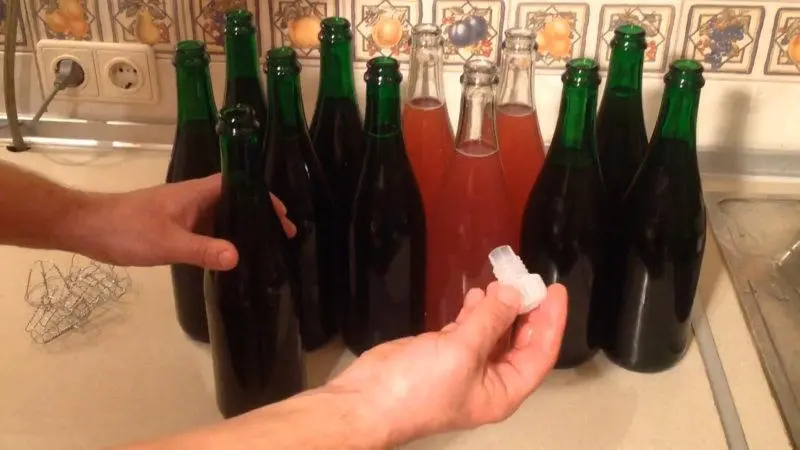
Now on sale there are special champagne corks with a sediment trap – they are not very expensive and can be used several times. This is a good way to get not only sparkling, but also clarified wine simply and without smut. Another gadget is a cork with a barometer. It is usually placed on one or two bottles from a batch and allows you to monitor the pressure inside the vessel, which should not exceed 5-6 bar.
Making champagne from purchased wine
This method is also not very complicated, but for it we need yeast and sugar. Wine should be taken light – no more than 9-10 degrees, of course – of sufficiently high quality, without preservatives, otherwise you will just spend a lot of time and effort, and get mediocre “sparkling”, not worthy even of a New Year’s corporate party in a round-the-clock stall.
You can also use homemade, fully fermented wine. Only wine yeast is used – baking or alcohol yeast is not suitable for this business, otherwise we will get carbonated mash for chacha.
- First you need to make the so-called “circulation liqueur” from a small amount of wine, sugar and yeast. According to Champagne standards, for every 0.7 bottle of wine (completely dry!) There should be 0.3 grams of yeast and 18 grams of sugar – then a normal pressure of 6 bar will be created inside the champagne. But at home, the pressure can be reduced so that the bottles certainly do not explode by reducing the sugar content to 12-15 grams. Yeast, of course, must first be fermented.
- Pour the wine into champagne bottles, add the circulation liquor. For 1-2 days, the drink should stand open, in a dark, warm place, under gauze, so that fermentation resumes in it. When the yeast started to work – foam and a characteristic smell appeared – we cork the bottles.
- Next, follow the recipe outlined in the previous subsection of the article.
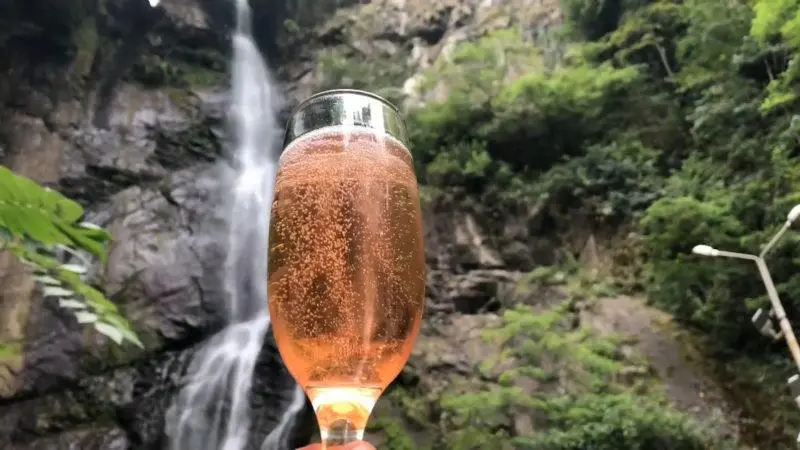
That’s all about the simple technology of making homemade champagne. We complicate the task.
From the rubric “curiosities”. I came across such a recipe for “champagne” on the Internet – carefully add soda and table vinegar to a bottle of wine, cork, shake well and – voila! – the elite drink is ready! The author even made a video about it, yeah. It’s a pity that there are no French acquaintances – I would tell you how to make sparkling wine correctly, otherwise they, the poor fellows, are only fooling around with these disgorgings and remuages for nothing.
Classic technology. Remuage of champagne.
A much more complex, time-consuming method that requires increased attention, manual dexterity and daily efforts for several months. However, it is this method that makes it possible to obtain champagne that is as similar as possible to French – transparent, like a mean tear of the hero of the day and with all the required 250 bubbles formed in an open bottle for 000-000 hours.
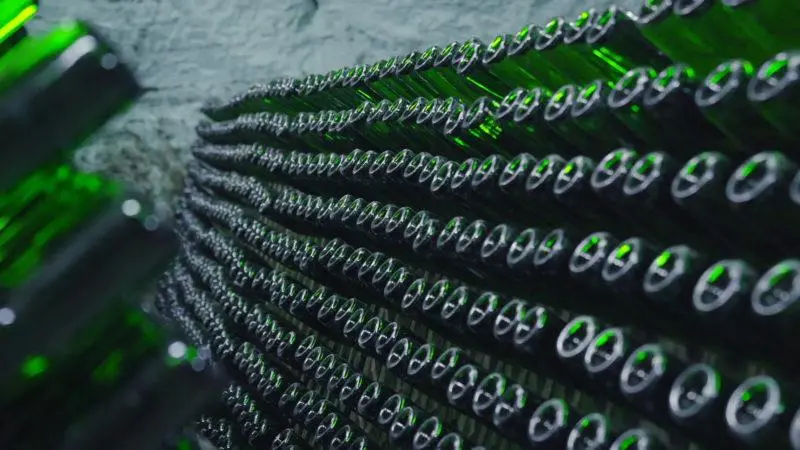
- We take wine that is completely clarified, dry, which has completed the stage of rapid fermentation. Ideally, the wine should have no more than 8-9 degrees by weight and 0.6-0.7% acidity.
- We make a circulation liquor, as in the previous recipe (18-20 grams of sugar and 0.3 grams of yeast for each bottle).
Instead of a lottery liquor, you can use a primer – a must from the same batch drained in the middle of the primary fermentation and stored in the refrigerator or another actively fermenting wine – 1-2 teaspoons for each bottle + sugar. Only I ask you, do not rely on raisins to resume fermentation, as some advise – nothing sensible will come of it.
- We combine wine with a circulation liquor or a primer with sugar. We fill each bottle almost under the neck – so that between the surface of the liquid and the cork there is no more than 2 centimeters of free space. We cork the drink with muzzle corks and send it to the basement or cellar.
- A few months the bottle should spend in a supine position. When the wine is completely clarified, there is no longer the slightest turbidity in it, and a dense sediment is noticeable at the bottom – it’s time to start remuage.
- Ideally, the riddling is carried out as follows: the bottles are stuck into the sand or placed in a special rack – first at an angle of 45 ° with the neck down, then – 30, 15 ° and so on until the vertical position. But you can simplify the procedure by immediately placing the champagne upright, and then sharply turning it daily or tapping it with a rubber mallet. The procedure should be repeated until all the yeast sediment moves to the neck, and the drink becomes completely transparent again.
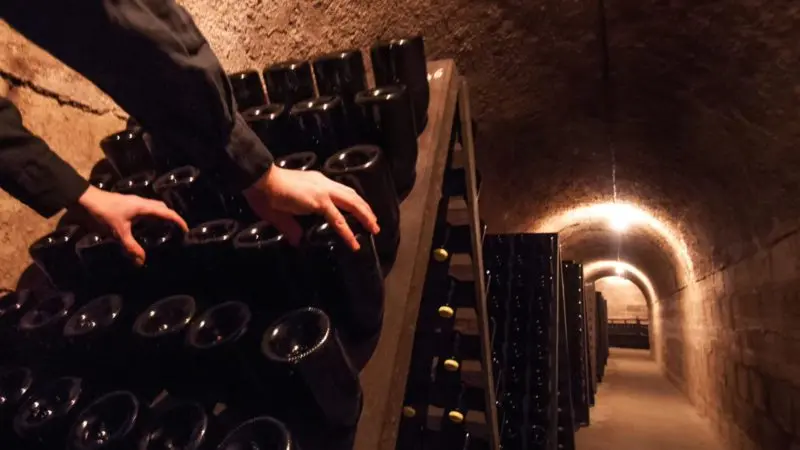
- It is time to carry out the most complex and responsible procedure – the disgorgement of champagne. To do this, you will need: a large trough or basin; new champagne corks with muselet; another liquor called “expeditionary”; and, preferably, an assistant who, again, preferably, has hands growing from where they should be.
- First you need to make expeditionary liquor. Despite the pretentious name, it is just sugar dissolved in warm wine, sometimes with the addition of good cognac, to fix the drink and stop even a hint of fermentation in it. The proportions are as follows (about 50-100 ml of liquor will go into each bottle of champagne, depending on your dexterity and speed): 50 ml of cognac, 700 grams of sugar, 500 ml of wine (get some sweet champagne); 50 ml cognac, 550 wine, 600 g sugar (semi-sweet); or 50 cognac, 650 wine, 500 sugar (semi-dry).
Instead of liquor for fruity sparkling wines, you can use liqueurs or weak, slightly sweetened liqueurs or liqueurs from the same fruit or berry. Then the champagne will acquire a more pronounced fruity taste.
- Actually, disgorgement of champagne. Carefully, so as not to disturb the sediment that has settled at the cork, we take the bottle and carefully tilt it vertically to the floor or slightly higher. As carefully as possible, over the basin, unscrew the muzzle, slightly loosen the cork – it should fly out on its own, along with sediment and a small amount of wine. We close the neck with your finger, put the battle vertically, quickly top up the expedition liquor to the top and immediately cork the bottle with a new cork with a muzzle.
- After this procedure, the sparkling wine must be kept for another 3 months, at a temperature of 6-10 degrees, and only after this period has passed it can be tasted.
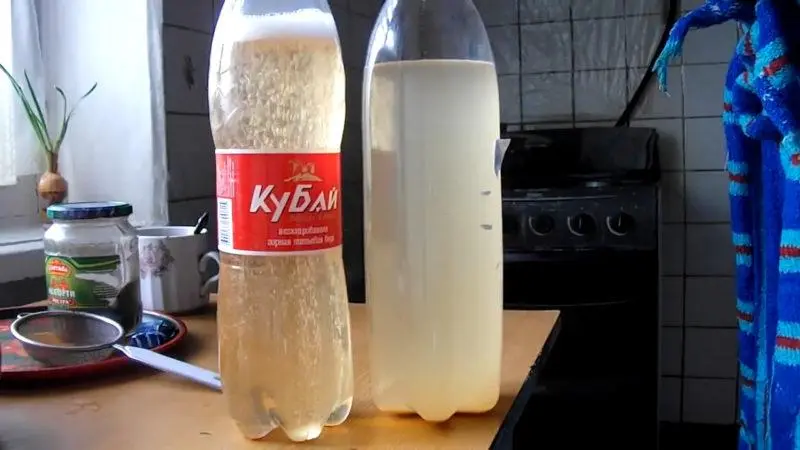
That’s all, in general terms – this way of making champagne at home is considered the best!
If you think that Soviet champagne has its own special charmthen you are not mistaken. In the post-Soviet space, a simplified technology for making champagne is used, in which sparkling wine is prepared in large sealed containers, and filtered and bottled in special high-pressure units. This method is called the Sharma Method.
“Champagne” from the leaves
Of course, this is not champagne, and not even wine at all: the first is rather kvass, and the second is drinking mash. But the drinks turn out to be interesting, refreshing, light enough, and most importantly, they are made very simply!
Blackcurrant Champagne
The recipe for this drink is very similar to that of kvass or ginger ale. We will need:
- Pure boiled water – 3 liters;
- Sugar – 200 grams;
- Lemon;
- 30-40 grams of young blackcurrant leaves;
- Yeast (preferably wine) – 1 tsp
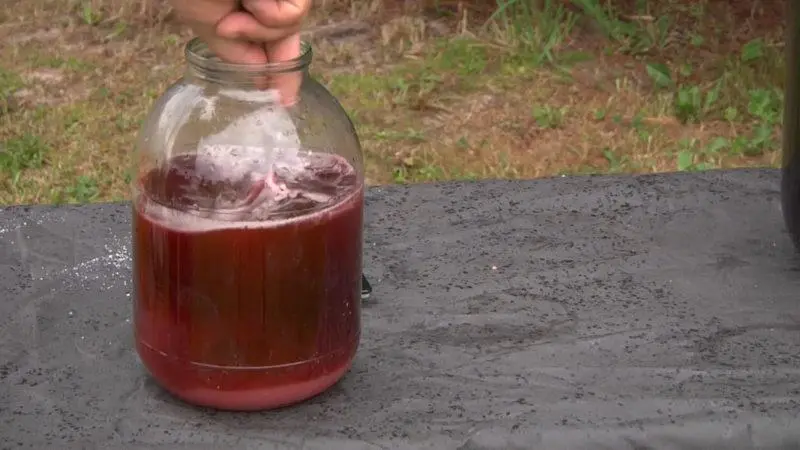
Remove the zest from the lemon (only colored), cut the pulp, divide it into slices. The zest and pulp, along with sugar and leaves, are sent to room temperature water. The jar is closed with a lid and kept in the sun for 2-3 days, the contents must be shaken periodically. After a couple of days, we ferment the yeast in a small amount of warm water and send it to the resulting infusion. We cover the jar with a lid or gauze and leave it for a couple of hours until fermentation starts. We install a water seal on the container, send it to a cool place for a week – ten days.
After that, we filter the drink with a couple of layers of gauze, send it to the refrigerator for a day to precipitate. Now the “champagne” needs to be decanted and bottled or eggplants, after adding a tablespoon of sugar to each. Keep the drink in a cold place for at least a month. Everyone, you can try!
Champagne from grape leaves
The recipe is a little more complicated than the previous one, but, of course, much simpler than the first three. At the output, we will get a drink that is remotely similar to wine, but at the same time we do not use a single bunch of grapes, but only young leaves. Leaves are better to collect juicy and fresh, from fruit varieties. In addition to the leaves, only water, sugar – 250-300 grams per liter of must – and wine yeast are needed. You can also use yeast top dressing.
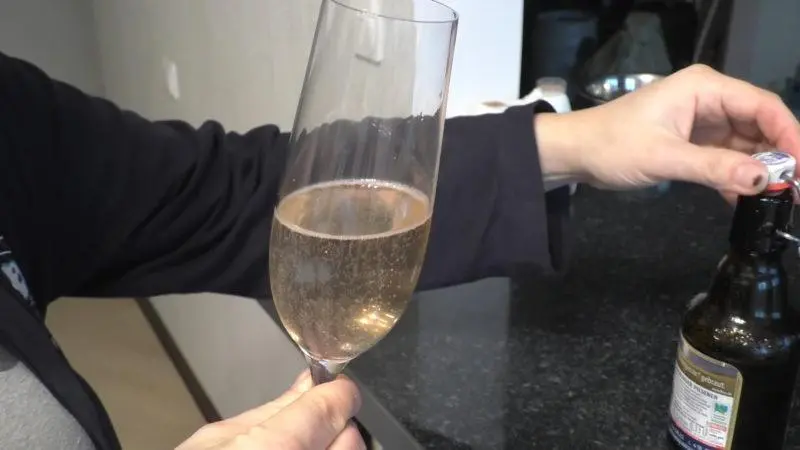
- Vine leaves (tender young shoots can also be taken) are washed and coarsely chopped with a knife. We put them in a suitable jar, cover with sugar and pour boiling water over so that the jar is 2/3 full.
- Wrap the jar and let it cool to room temperature. Add pre-fermented yeast to the wort and place in a warm place to start fermentation.
- When the process has begun, a water seal should be put on the jar. Primary fermentation lasts 7-8 days, after which you need to drain the must, squeeze the leaves, filter the liquid and pour it into plastic or champagne bottles by ¾ of the volume.
- Bottles are sent to the cellar for aging for three weeks – a month. When using plastic eggplants, excess carbon dioxide must be periodically bled off if the container becomes too inflated, otherwise it may burst under pressure.
That’s it, our grape leaf champagne is ready!
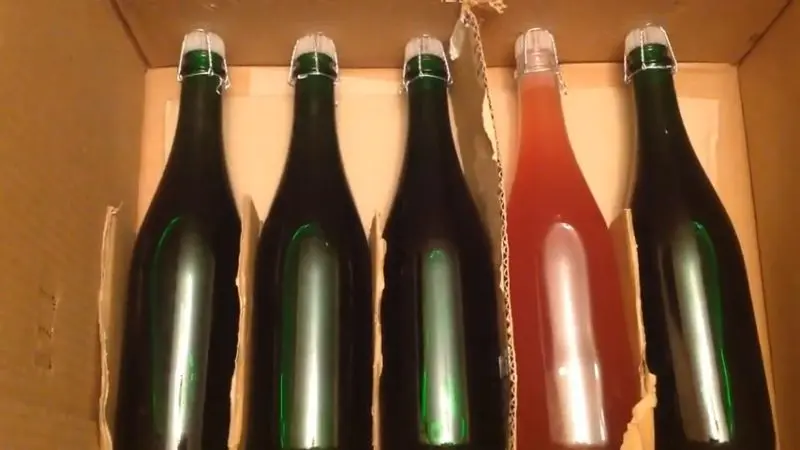
And finally, according to tradition, a quote from the greats:
“I only drink champagne for two reasons: when I’m in love and when I’m not in love”
Coco Chanel
Prepare champagne at home, fall in love more often and arrange a holiday for any happy occasion!










لااقل يك دور مقاله ي خودتون رو مطالعه كنيد ببينيد اصلا قابل خوندنه ؟!
هوش مصنوعي واستون نوشته يا با گوگل ترجمه كرديد ؟! به هر حال براي يك فارسي زبان ادبيات شما شاهكاره !!!
فعل نداره جمله ها سر و ته نوشته شده و كلمات عجيب و غريب و بي ربط استفاده شده !
تنبلي شما در توليد محتوي ستودنيست .
😂